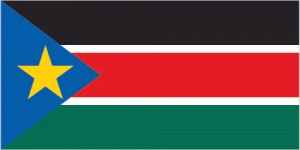SOUTH SUDAN
- Capital- Juba
- Area- 644,322 sq km
- Population- 10.9 million

- Life Expectancy- 57 years
- Average age- 19 years
- GDP per capita- $1720
South Sudan separated from the Republic of Sudan after a referendum in 2011. It collapsed into civil war in 2013 – despite a number of international agreements the situation continues to worsen. Conflict between two major ethnic groups, the Dinka and the Nuer, has made the political situation in South Sudan highly unstable.
There are 2 million internally displaced persons in South Sudan and 1 million South Sudanese refugees and asylum seekers in Uganda (UNHCR), where many South Sudanese have fled to.
The UN has declared South Sudan as the worst humanitarian crisis since 1945 – worse than Nigeria, Somalia and Yemen.
South Sudanese Civil War
Civil war broke out in South Sudan in 2013, an estimated 300,000 people were killed in the war – which also led to the displacement of over 1 million people. This unrest was the most recent event in a long history of conflict in the country. A comprehensive peace agreement was signed in August of 2015, but the conflict continues, and the UN still estimates that 6.9 million people are in need of civil assistance.
Education in South Sudan
Despite some increase in primary enrolment, education indicators in South Sudan remain amongst the worst in the world. Around 1 million children in poor rural areas remain out of school, and retainment of pupils is poor with under 10% of students completing primary school. Conflict has had a huge impact on the education system of the country, many displaced children stopped their education, and huge numbers of recent returnees are proving overwhelming to an already overstretched education system. Gender equality is also an issue with only 33% of girls attending schools. South Sudan has an urgent need for more classrooms and trained teachers.
